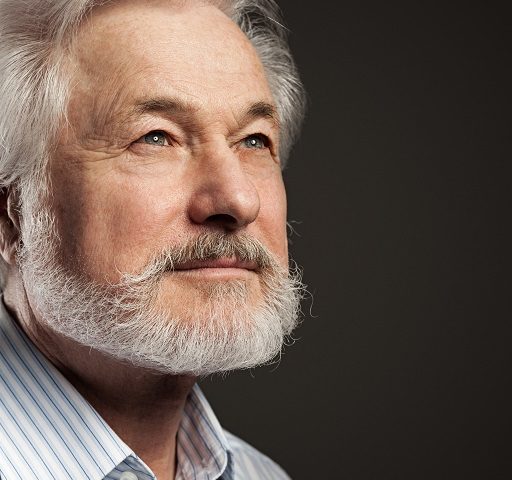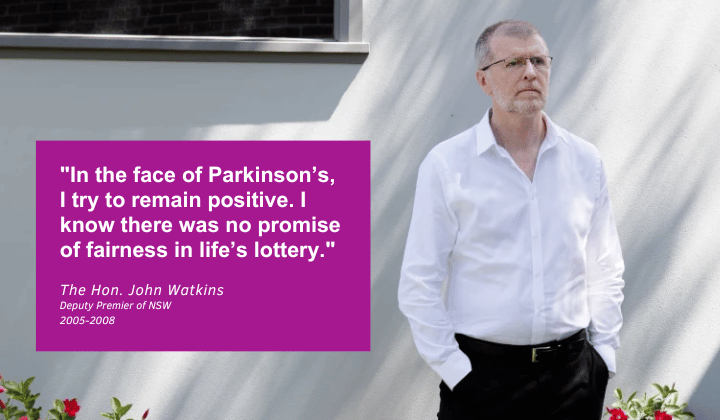Men and Parkinson’s

Parkinson’s research partnership
2nd April 2021
10 points to ponder!
2nd April 2021Men and Parkinson’s

Men and Parkinson’s
Men often don’t like discussing anything health related. Subsequently, serious health concerns and potential resources and places to go for assistance are not easily shared among male friends. In Australia, men on average live five years less than women
for a variety of reasons including:
- Lower awareness and understanding of male health by the individual and community.
- Men are 4 times less likely to visit the doctor than women.
- Men may engage in risky activities that jeopardize their health.
- Allocation of less time and lower priority to medical appointments.
- Men with mental health problems, such as depression, are much more likely to self-medicate with alcohol and other drugs.
- Men comprise over 75 per cent of all suicides in Australia.
Parkinson’s also effects men differently
More men than women are diagnosed with Parkinson’s, by almost 2 to 1. Several studies support this number, including a large study in the American Journal of Epidemiology.
Yet researchers aren’t sure why this variation occurs. Some suggest that estrogen might offer some protective effect for women. However, there is also a higher rate of head trauma, exposure to occupational toxins and potentially a genetic susceptibility
for men. One study implies that men on average develop Parkinson’s approximately two years earlier than women. However, other studies have found no differences for onset age between men and women. Early studies indicated that Parkinson’s progresses more
rapidly in men. Other studies have shown that men and women who are diagnosed with Parkinson’s at the same age, appear to have similar progression, duration, and life expectancy. This varies greatly from the non-Parkinson’s population. Overall, men
and women have similar motor and non-motor symptoms. However, men more frequently report having problems with REM Sleep Behaviour Disorder (physically acting out whilst dreaming) and report rigidity more frequently than women. These differences in reported
motor symptoms, were significant only in patients who had Parkinson’s for more than five years. Tremor-dominant Parkinson’s is generally associated with a slower progression and better quality of life for men and a poorer quality of life for women.
Parkinson’s can affect mental abilities and the senses as well as muscle control. Men appear to maintain a better spatial orientation, while women often retain more verbal fluency. Different skills, such as spatial abilities, are more
dominant on a one side of the brain. Therefore, some abilities are influenced by which side of the brain is most effected by Parkinson’s and not simply by gender. One study regarding emotional communication implies that both men and women with Parkinson’s
can have difficulty communicating anger and surprise, but that men are more likely to lose the ability to interpret fear. However, the mask-like appearance that occurs with Parkinson’s, due to muscle rigidity, may lead to a distorted expression or interpretation
of emotions. Another noticeable difference is with medication. Levodopa is a standard medication for treating Parkinson’s.
Men with Parkinson’s metabolise Levodopa differently. Subsequently the dosage is often higher for men than women. Men also exhibit fewer side effects such as levodopa-induced dyskinesia (involuntary movements) from taking levodopa.
However, the dosage difference may be explained by men generally having a larger body mass. Men have more Parkinson’s related surgery and generally their symptoms are less severe than for a woman undergoing the same surgery.
MEN WITH PARKINSON’S TEND TO EXPERIENCE LESS DEPRESSION AND TAKE LESS ANTIDEPRESSANTS THAN WOMEN. IT APPEARS THOUGH THAT MEN HAVE MORE BEHAVIOUR AND AGGRESSION PROBLEMS.
Men are at greater risk of wandering, inappropriate or abusive behaviour and are more likely to be prescribed antipsychotic medications to treat this behaviour. It will require much larger scale, placebo-controlled studies to be conducted, to obtain more
conclusive evidence on the differences between men and women with Parkinson’s. However, men need to be more active in their approach to health. Even if you don’t feel sick, schedule annual check-ups. It’s important to know about your general health,
not just your Parkinson’s. You will live longer and better quality of life.
References:
Incidence of Parkinson’s: Variation by Age, Gender, and Race/Ethnicity Stephen K. Van Den Eeden, Caroline M. Tanner, Allan L. Bernstein, Robin D. Fross, Amethyst Leimpeter, Daniel A. Bloch, Lorene M. Nelson American Journal of Epidemiology,
Volume 157, Issue 11, 1 June 2003, Pages 1015–1022, //doi.org Published: 01 June 2003 Last medically reviewed on August 15, 2016
Parkinson’s Disease in Men https://parkinsonsdisease.net/men-affected-parkinsons/ Written by: Emily Downward & Jessica Johns Pool | Last
reviewed: September 2019 Published: 11 Apr 2018
Men’s Health 2018 – AMA Position Statement Better Heath Channel. (2014). Men’s Health. www.betterhealth.vic.gov.auSee ‘The Quiet Crisis: Challenges for men’s Health in Australia’ By Associate Professor Lina Ricciardelli FAPS, Professor David Mellor MAPS and Professor Marita McCabe FAPS, Centre for Mental Health and Wellbeing Research, Deakin University. www.psychology.org.auBetter Heath Channel. (2014). Men’s Health. www.betterhealth.vic.gov.au Reniers RLEP, Murphy L, Lin A, Bartolomé SP, Wood SJ (2016) Risk Perception
and Risk-Taking Behaviour during Adolescence: The Influence of Personality and Gender. PLoS ONE 11(4): e0153842. //doi.org Stanford L, Bonney A, Ivers R, Mullan J, Rich W, Dijkmans-Hadley B (2017) Patients’ attitudes towards chaperone use for intimate physical examinations in general practice. Available
at: www.racgp.org.au Chaplin TM. Gender and Emotion Expression: A Developmental Contextual Perspective. Emotion review : journal of the International
Society for Research on Emotion. 2015;7(1):14-21. doi:10.1177/1754073914544408. Australian Government Department of Infrastructure and Regional Development (2016) Road Trauma Australia 2015 Statistical Summary. Available at: https://www.bitre.gov.au/World Health Organization. 2014. Injuries and violence: the facts 2014. Available at: www.who.int Victorian Responsible Gambling Foundation.
(2014) Gender gap highlighted in new gambling study. Available at: www.responsiblegambling.vic.gov.au Australian Institute
of Health and Welfare. (2018). Life Expectancy and Deaths. Available at: www.aihw.gov.au Baker P, Dworkin S, Tong S,
Banks I, Shand T, Yamey G. (2014) The men’s health gap: men must be included in the global health equity agenda. Available at: www.who.int Australian Bureau of Statistics. (2015) National Health Survey: First Results, 2014-2015. Available
at: www.abs.gov.au Yousaf O, Grunfield E & Hunter M. (2013). A systematic review of the factors associated with delays in medical and psychological help-seeking among men. Available
at: //doi.org Maribyrnong City Council. Sons of the West. www.maribyrnong.vic.gov.auAustralian Government Department of Health and Aging. (2010) National Male Health Policy Supporting Document: Access to Health Service. Available at: www.health.gov.au/Improving men’s health and wellbeing Resource: data and evidence www2.health.vic.gov.au/Orygen. (2017) Keeping it real: Reimagining mental health care for all young men. Available at: www.orygen.org.au/Policy-Advocacy/Policy-ReportsPerinatal Anxiety and Depression Australia. (2017) After Birth: Having a new baby can be both an exciting and challenging time for new mums and dads. Available at: www.panda.org.au/info-support/Australian Bureau of Statistics. (2013) Labour Force, Australia: Labour Force Status and Other Characteristics of Families, Jun 2012. Available at: /6224.0.55.001~Jun%202012~Chapter~one%20Parent%20FamiliesAustralian Bureau of Statistics. (2016). Causes of Death Australia 2014, preliminary data., Cat. no. (3303.0). Canberra: ABS Orygen. (2017) Keeping it real: Reimagining mental health care for all young men. Available at: Keeping-it-real/Keeping-it-real-Policy-Paper.aspxAustralian Cancer Research Foundation. (2018). Cancer Statistics. Available at: on-cancer/cancer-statistics-australia/ Australian Institute of Health and Welfare. (2017). Cancer in Australia 2017. Available
at: www.aihw.gov.au/getmedia/ Duffy SW, Myles JP, Maroni R, Mohammad A. Rapid review of evaluation of interventions to improve participation in cancer screening services. Journal
of Medical Screening. 2017;24(3):127-145. doi:10.1177/0969141316664757. Australian Institute of Health and Welfare. (2017). Cancer compendium: information and trends by cancer type. Available at: www.aihw.gov.au/reports/SBS News. (2015). Charities hope for increased cancer funds. Available at: charities-hope-for-increased-cancer-funds



